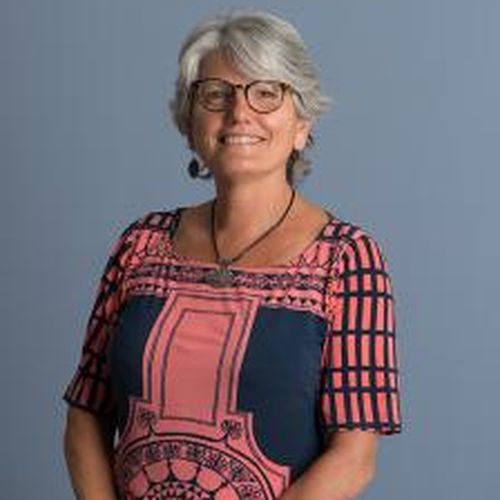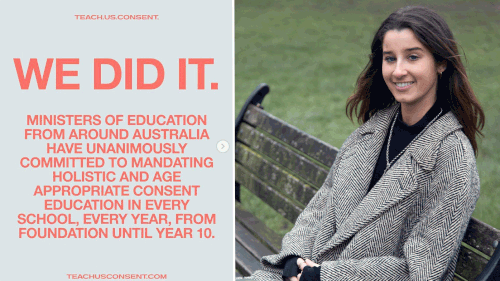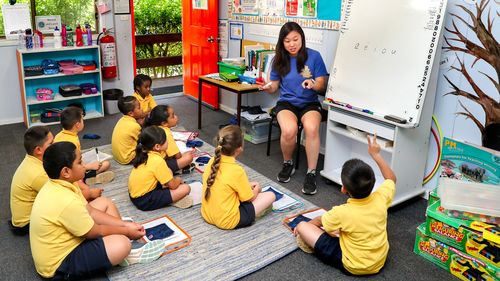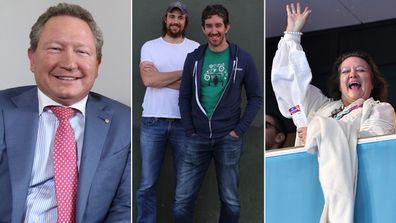The new curriculum will focus on age-appropriate consent and respectful relationship education and cover information on gender stereotyping, coercion and power imbalances.
But what does that actually look like?
Here’s what we know about the new curriculum and what has changed over the years in Australian sex education.
What did consent education look like in Australian schools?
The exact date that consent education began in Australia is difficult to determine, but Honorary Professor Deborah Ollis of Deakin University said it varied by state and territory, but the beginnings of sex education arrived in the 1980s.
“In the 1980s they developed the national statements and profiles with eight areas of learning and one of those areas was health and physical education and in that curriculum at the time sex education was a area of interest,” Professor Ollis said.
In the early 1990s, the program focused on gender-based violence after the “fearless” resource was rolled out, she said.

It was then that a mandate was given to Australian schools to teach sex education, and this new national curriculum included consent.
“This has been given to all Australian schools from Prep to Year 12,” she said.
“In that, there was a huge component about consent and that was a big part of the backbone of relationship education.”
Prof Ollis said that in the early 2000s the language of the program changed to talk about respectful relationships “out of concern for violence against women”.
“It’s nothing new, something like consent has been covered in the curriculum for decades,” she said.
So what good is the new curriculum if consent education has been taught for decades?
Well, it was never compulsory for all schools to teach and the curriculum was open to “interpretation”.
“Schools have had enormous flexibility in how they interpret the curriculum,” Professor Ollis said.
It’s one of the main reasons for the change, and why student activist Chanel Contos started calling for reform a year ago.

Another issue is that consent has been included in the government school curriculum but is not always taught in non-government schools due to the flexibility of teaching.
“It’s very different when governmental jurisdictions have curriculum guidelines, but I suspect in other sectors, religious and non-governmental schools, that may not be the case,” said the Professor Ollis.
Now that it is mandatory, public and independent schools may have specific guidelines on this.
“Bringing consent into the national curriculum should make it easier for all schools to teach about consent and provide them with access to consistent teaching materials across the country,” an Independent Schools spokesperson said. Australia.
What should the program include?
One of the key elements of teaching consent is to start at an early age.
“Age-appropriate” education is a term that comes up a lot in this conversation, and it means starting with early elementary school students.
It can be taught through a friendship lens starting in kindergarten and expanded to talk about intimate and romantic relationships as students grow.
Professor Ollis said this means students will have a basic understanding of consent when they reach the conversations about sexual consent, so it’s not a complete surprise.
“First year students need to understand the issues around their bodies and that people are not allowed to touch them without consent,” Professor Ollis said.
Dr Jacqueline Hendriks of Curtain University added that modeling consent in an age-appropriate way could involve discussions about whether or not students feel comfortable “kissing someone.” ‘a or if you prefer to give a high five’.
With internet access, more and more children are accessing pornography at an early age, Professor Ollis added, so teaching about media literacy and online sexualisation must begin early.
Other considerations outlined by Professor Ollis include correct language around sex organs, gender and power relations, and sex positivity.
“Consent is much more complex than just ‘saying no’,” Professor Ollis said.

What will the new curriculum look like?
The Australian Curriculum Assessment and Reporting Authority, which is responsible for implementing the national curriculum, said it would reinforce “explicit teaching of consent and respectful relationships” in an age-appropriate way.
Dr Hendriks said “reinforce” means using the word consent in the classroom.
“The language isn’t explicit enough, so a school can just talk about healthy and unhealthy relationships and bypass that without going into detail,” she said.
The National Curriculum has been approved by Education Ministers and will be available for the next term, so we cannot yet be sure of the ins and outs of the curriculum.
But Dr Hendriks, who has seen the draft new curriculum, said it “strongly mentions” consent and respectful relationships.
She also said the new curriculum would begin “age-appropriate” consent education at an early age, basically starting in kindergarten.
But Dr Hendriks said the national curriculum is not always fully adopted by state and territory schools.
“NSW and Victoria have both said they will adapt and create their own curriculum and similarly in Western Australia,” she said.
So there will always be some flexibility in the curriculum, but Dr Hendriks said the mandate is a “starting point” and she hopes a national standard will improve the depth of consent education embedded in schools.

Both Dr Hendriks and Professor Ollis highlighted the importance of professional development for teachers when teaching consent, which was not addressed in the new mandate.
“You wouldn’t expect a math teacher to teach math without proper training,” Professor Ollis said.
“Unless we provide in-service professional development to teachers in schools, we cannot expect them to address these sensitive issues.”
Professional development can look like funding and time for teachers to attend external workshops.
Connecting school and community is also important in consent education, Dr. Hendriks said.

Australia’s 10 richest people revealed
“It’s a societal thing and we all need to work together collectively,” she said.

